#mudlarker
Explore tagged Tumblr posts
Text
I become consumed with jealousy every time I look at mudlarking instagram pages.
#mudlarking#their river muck has SO MUCH more cool stuff that's SO SO MUCH older than our river muck
18K notes
·
View notes
Text
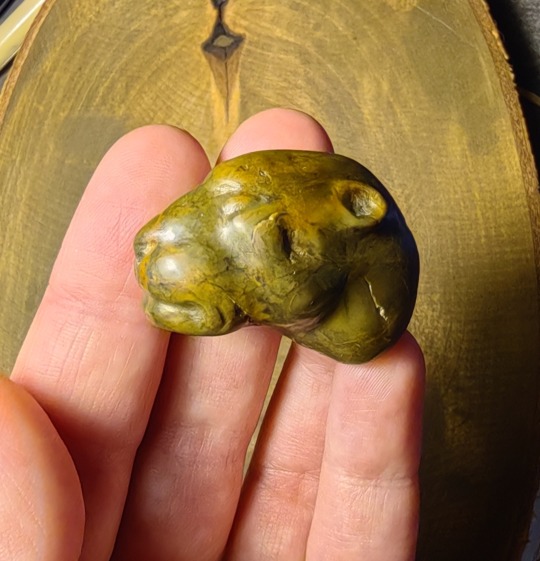

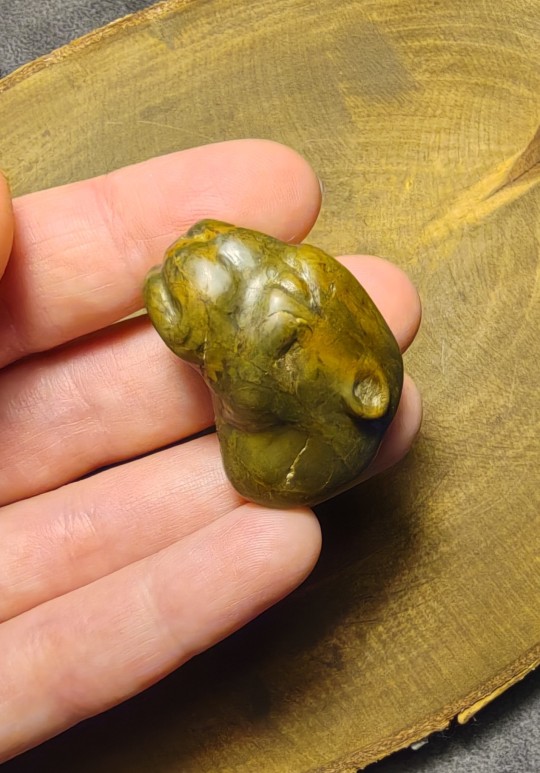

Trying new shapes while being emotional about cave art, a cave lion now. Carved river pebble, I think I'll turn it into a bead.
#stone carving#lapidary#artisan#lion#cave lion#miniature#pebbles#carving#mudlarking#mineral hunting#beach combing#rock art#neolithic#my art#crafts
506 notes
·
View notes
Text

stealing this from the london museum’s insta page. feeling a solid 8 rn
432 notes
·
View notes
Photo


(via Remnants of a Legendary Typeface Have Been Rescued From the River Thames)
692 notes
·
View notes
Text

Beautiful claypipes with different motifs and from different times (18th - 19th century), found in the Thames by nicola white mudlark
246 notes
·
View notes
Text





It's been a while since I posted some creek finds! A LOT of really neat little treasures have washed up recently. Here are a few of them!
On this plate of creek finds we have 5 and 1/2 cow teeth, a goat or sheep tooth, opossum tooth, rabbit tooth, an old button, probably my favorite brachiopod fossil I've ever found (it's solid white quartz!!), some really exceptional crinoid fossils, first gastropod fossil I've ever found down there, loads of other rad fossils, some tumbled pieces of soda bottles from the late 1800s or very early 1900s, a piece of an old crock butter churn, lots of other neat tumbled glass and pottery pieces, some nice quartz crystals, a 25 year old plastic toy from Burger King lol, and maybe my favorite piece on the plate—a bisque porcelain duck head from an old figurine.



Amidst all of these awesome treasures there is also a special secret find—

It's another nice little chunk of creek-tumbled uranium glass! Looks like part of an old candy dish.
#creeklarking#mudlarking#trinkets#oddities#fossils#tumbled glass#vintage pottery#vintage glass#uranium glass#animal teeth#vulture culture
103 notes
·
View notes
Text

In this house we love and respect a good narrative foil
(x)
#mdzs#mdzs fanart#the untamed#four social media sites each filled with screenshots of the other three#but we persist#like internet mudlarks#culture vulture culture#it’s an experiment: charcoal plus watercolor: yes?#no?#wei wuxian#jin guangyao#artbythree
135 notes
·
View notes
Text
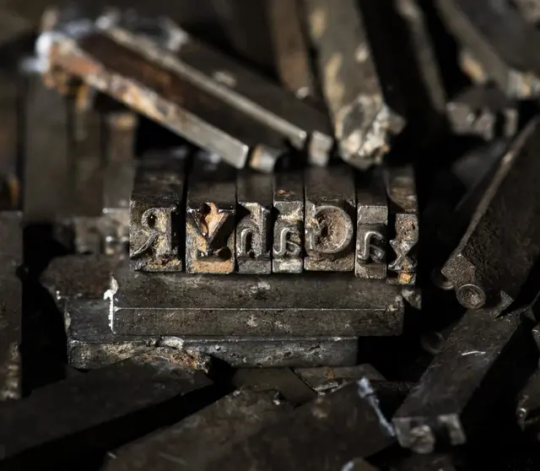
Remnants of a Legendary Typeface Have Been Rescued From the Thames River
Doves Type was thrown into the water a century ago, following a dispute between its creators.
The depths of the river Thames in London hold many unexpected stories, gleaned from the recovery of prehistoric tools, Roman pottery, medieval jewelry, and much more besides. Yet the tale of the lost (and since recovered) Doves typeface is surely one of the most peculiar.
A little over a century ago, the printer T.J. Cobden-Sanderson took it upon himself to surreptitiously dump every piece of this carefully honed metal letterpress type into the river. It was an act of retribution against his business partner, Emery Walker, whom he believed was attempting to swindle him.
The pair had conceived this idiosyncratic Arts and Crafts typeface when they founded the Doves Press in the London’s Hammersmith neighborhood, in 1900. They worked with draftsman Percy Tiffin and master punch-cutter Edward Prince to faithfully recall the Renaissance clarity of 15th-century Venetian fonts, designed by the revolutionary master typographer Nicolas Jensen.

With its extra-wide capital letters, diamond shaped punctuation and unique off-kilter dots on the letter “i,” Doves Type became the press’s hallmark, surpassing fussier typographic attempts by their friend and sometime collaborator, William Morris.
The letterforms only existed as a unique 16pt edition, meaning that when Cobden-Sanderson decided to “bequeath” every single piece of molded lead to the Thames, he effectively destroyed any prospect of the typeface ever being printed again. That might well have been the case, were it not for several individuals and a particularly tenacious graphic designer.
Robert Green first became fascinated with Doves Type in the mid-2000s, scouring printed editions and online facsimiles, to try and faithfully redraw and digitize every line. In 2013, he released the first downloadable version on typespec, but remained dissatisfied. In October 2014, he decided to take to the river to see if he could find any of the original pieces.
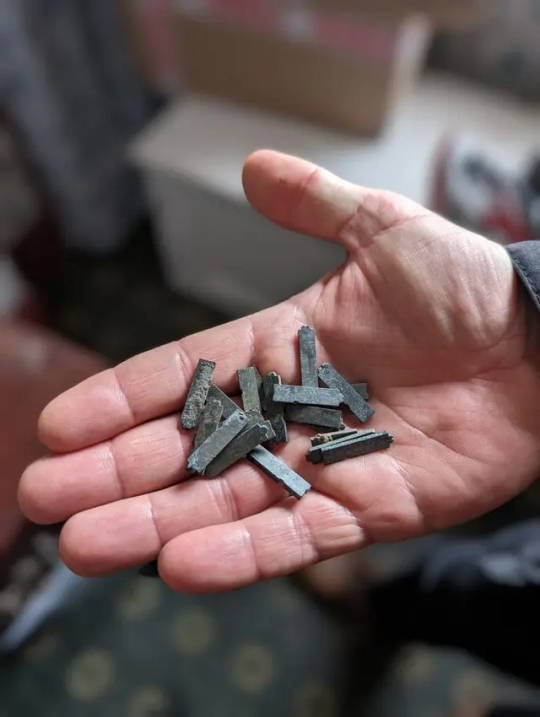
Using historical accounts and Cobden-Sanderson’s diaries, he pinpointed the exact spot where the printer had offloaded his wares, from a shadowy spot on Hammersmith bridge. “I’d only been down there 20 minutes and I found three pieces,” he said. “So, I got in touch with the Port of London Authority and they came down to search in a meticulous spiral.” The team of scuba divers used the rather low-tech tools of a bucket and a sieve to sift through the riverbed.
Green managed to recover a total of 151 sorts (the name for individual pieces of type) out of a possible 500,000. “It’s a tiny fraction, but when I was down by the river on my own, for one second it all felt very cosmic,” he said. “It was like Cobden-Sanderson had dropped the type from the bridge and straight into my hands. Time just collapsed.”
The finds have enabled him to further develop his digitized version and has also connected him with official mudlarks (people who search riverbanks for lost treasures, with special permits issued) who have uncovered even more of the type.
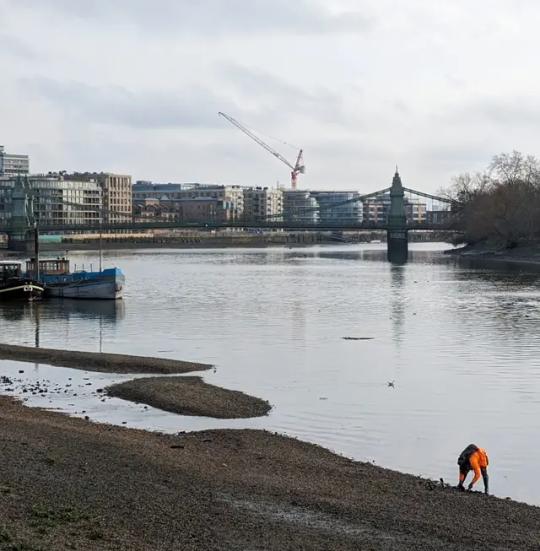
Jason Sandy, an architect, author and member of the Society of Thames Mudlarks, found 12 pieces, which he has donated to Emery Walker’s House at 7 Hammersmith Terrace. This private museum was once home to both business partners, and retains its stunning domestic Arts and Crafts interior.
Much like Green, Sandy was captivated by the Doves Type story, and mounted an exhibition at the house that displays hundreds of these salvaged pieces, including those discovered by Green, as well as mudlarks Lucasz Orlinski and Angus McArthur. The show was supplemented by a whole host of Sandy’s other finds, including jewelry and tools. An extant copy of the Doves English Bible is also on display.
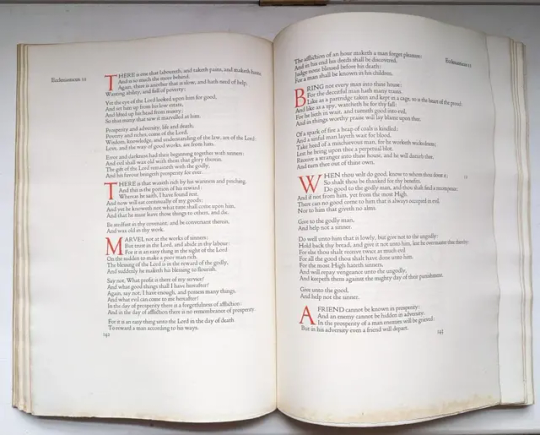
“It is not that unusual to find pieces of type in the river,” Sandy said. “Particularly around Fleet Street, where newspaper typesetters would throw pieces in the water when they couldn’t be bothered to put them back in their cases. But this is a legendary story and we mudlarks love a good challenge.” The community is naturally secretive about exactly where and how things are found. For example, Orlinski has worked under the cover of night with a head torch, to search for treasures at his own mysterious spot on the riverbank.
For Sandy, the thrill comes from the discovery of both rare and everyday artifacts, which can lead to an entirely new line of inquiry: “The Thames is very democratic. It gives you a clear picture of what people have been wearing or using over thousands of years. And it’s not carefully curated by a museum. The river gives up these objects randomly, and you experience these amazing stories of ordinary Londoners. It creates a very tangible connection to the past. Every object leads you down a rabbit hole.”
By Holly Black.
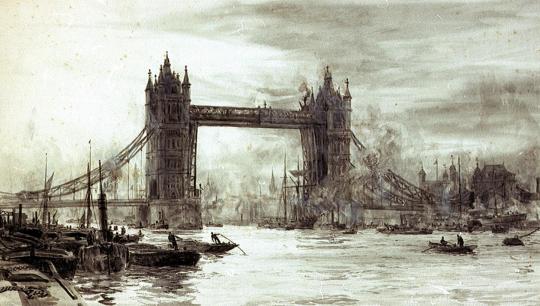
#Remnants of a Legendary Typeface Have Been Rescued From the Thames River#Doves Type#printer#Society of Thames Mudlarks#mudlark#mudlarking#ancient#archeology#archeolgst#history#history news#long reads#long post
104 notes
·
View notes
Text
never forget finding GUN
21 notes
·
View notes
Text
My stepmom has a coffee shop.
But it's in a small town. She's the second one to set up. There's now four. The third one for whatever reason, has it out for her.
They steal drink ideas, they spread falsehoods and twist things she's said or done.
They're spreading rumors and turning the town against her and just... I want my stepmom to succeed. I want her to be able to do this despite the gossip and mean girls and lies. She's so stressed and so hurt by all this and I just. Feel helpless.
If anyone is in TN and needs a coffee stop, hit me up and maybe you can help?
She has really good food there as well. Teas and sandwiches and all that made to order.
36 notes
·
View notes
Text

Recent beachcombing finds. A five-marble day!
28 notes
·
View notes
Text


A new carved horse pendant for @kirtlandswarbler , flat river pebble with thin light streaks
#stone carving#horses#equine#horse#sculpture#lapidary#miniature sculpture#miniature#necklace#stone age#pebbles#pebble art#mudlarking#beach combing#my art#rustic jewelry
474 notes
·
View notes
Text




find of the day from mudlarking this morning :-) armorial clay pipe celebrating admiral edward vernon's naval victory over admiral blas de lezo at the battle of cartagena de indias in 1741. except vernon did not actually win that battle! but he was so confident that he would early on in the campaign that he sent a message to that effect back to england where everyone started making commemorative merch. and then he lost :) anyway. very cool to find a Ship Pipe and especially so close to the cutty sark (A Ship)!
127 notes
·
View notes
Text
Is it geologically probable for swallows rest to have basalt cliffs? Not really. Am i gonna headcanon it anyway? Of course.
Because I can picture Adrian and Victor walking along the beach, spending time waiting for lord vane to arrive. When all of a sudden Adrian comes to a dead stop in the middle of a sentence, staring at something ahead of them. Then he gasps, and gets so excited he forgets where he is, who he's with, and the collar around his neck, as he starts excitedly slapping Victor in the arm going, "Look, look, look, look--" at top speed.
Victor, who was primed for some kind of emergency since Adrian stopped talking is looking around frantically like, "What, what happened???"
Only for Adrian to point ahead and whisper-yell, "Basalt cliffs!!" And start booking it across the beach.
And yeah, maybe it painfully reminds Victor a lot of his younger self, and he's just about ready to remind Adrian of his manners as a priest, but then Adrian turns around to see if hes coming and the smile on his face is the most animated hes seen Adrian since he met him. And when he catches up he gets treated to a long winded ramble about crystal structure and volcanic activity and geologic hotspots and the Implications and how they could easily be the most ancient part of the island and erosion wear patterns and hes always wanted to see these in person cause they have them in northern ireland and and-- Its the most he's ever heard Adrian talk in one sitting.
And he supposes that having an appreciation for the wonders of the world that God made is perfectly acceptable for their profession, and lets him talk as long as likes.
#Adrian would be vibrating in excitement the whole time they were on that beach anyway#the ground is just covered in ancient coins??? oh my god?#he fucking loves rocks and artifacts and always wanted to go mudlarking on the thames but didn't get a chance before coming to swallows rest#he goes out by himself one day and comes back jingling from rocks and coins in his pockets lmao#and yeah maybe i think about blorbo from my shows being very patient with my self inserts infodumping a lot#this has no bearing on my irl mental state shut up dont worry about it#father rambles#what manner of man#half sorry for spamming the tag but uhh as you can tell this story wont leave my brain#gotta call my boss and be like yeah im not coming in today i gotta read about this priest getting seduced by a vampire. yeah all day sorry.#to be fairrr re: would there actually be basalt in this island#northern ireland does have a pretty famous set of cliff like this: the giants causeway#idk which direction swallows rest is supposed to be from the mainland but it could be very close to there!
16 notes
·
View notes
Text
Gwendoline Christie joins mudlarks of the Thames as a detectorist
When Gwendoline Christie played Brienne of Tarth in Game of Thrones, she wielded an elaborate steel sword. As Captain Phasma in the Star Wars franchise, she was armed with an enormous gun. In real life, however, she prefers to wield a metal detector.
The West Sussex-born actress has revealed that she enjoys mudlarking, a pastime dating back centuries in which people scavenge for treasures on a riverbank when the tide is out. Modern mudlarkers use metal detectors to try to find hidden artefacts.
“There’s something secretly thrilling about unearthing slivers of artefacts, tokens of another age, further reaching through time to touch a connection with our ancestors,” Christie said.
65 notes
·
View notes
Text

A lead loven token with an anchor, maybe a sailor's love token or a tally token or to use in lieu of small change, maybe by the landlord of ‘the Anchor’, 18th century. Found by london.mudlark, Thames, London
96 notes
·
View notes